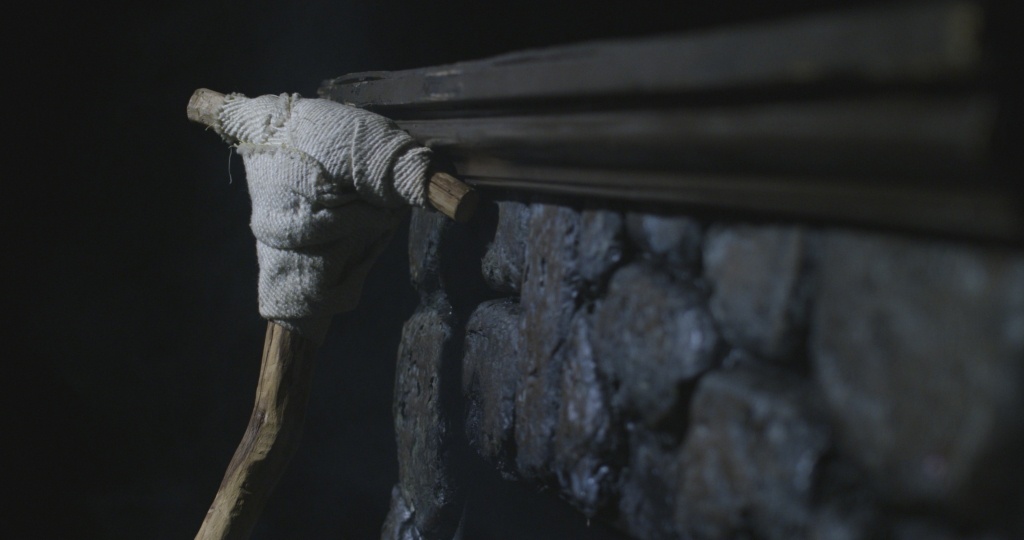WHY CHRISTMAS CAROL?
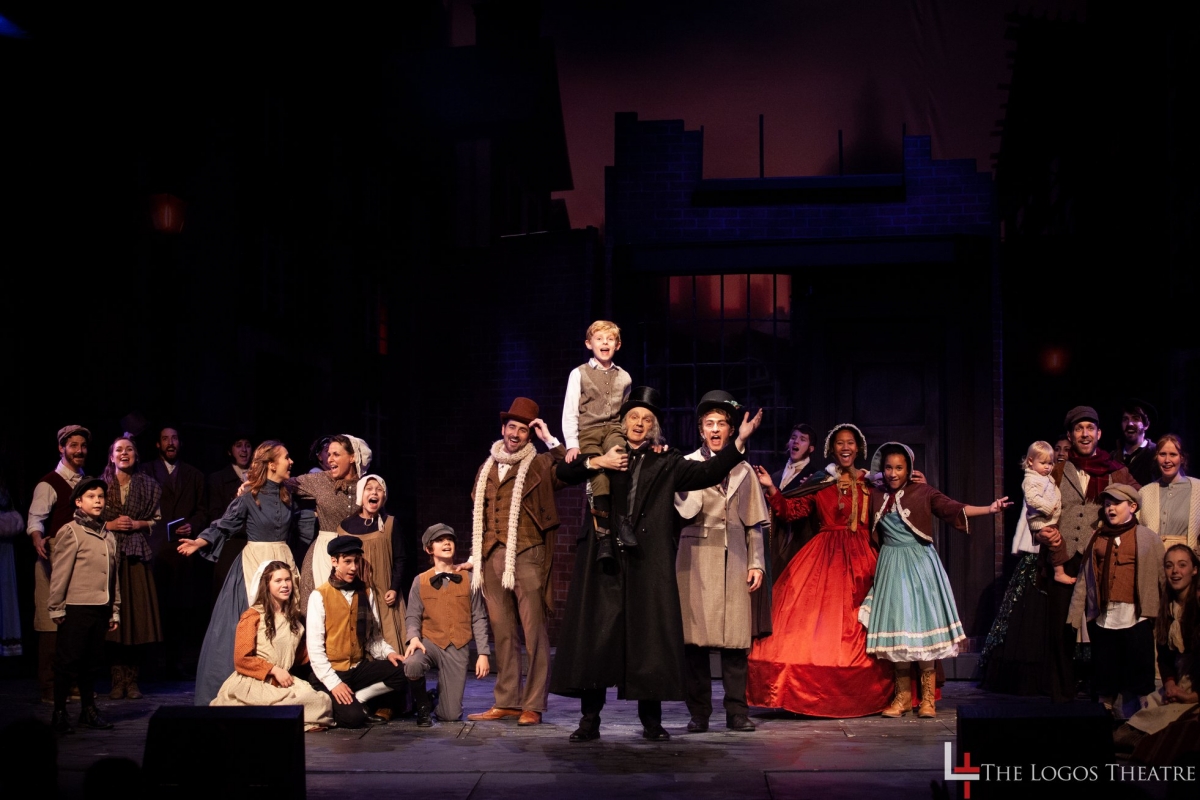 Dickens’ A Christmas Carol has become a staple for millions of people through the years as they have read the book or watched an adaption of the story in a movie or stage production or musical. The Logos Theatre loves to put powerful stories on the stage that are not done simply for amusement or entertainment, but instead to challenge each audience member with a powerful message of truth that can change their lives. This classic tale does just that. Dickens delivers an amazing story with laughter, imagination, family love, greed, selfishness, and more. Ebenezer Scrooge’s iconic character is developed, exposed, changed, and eventually completely transformed through the power of true thankfulness and an understanding of selfless love. Scrooge begins the story as a strong antagonist to Christmas cheer, goodwill to mankind, and generosity. However, throughout the story he slowly changes until he is the triumphant, yet humbled protagonist. Isn’t this the exact same thing that happens to each of us as we leave behind our selfish, sinful ways, and are transformed by Christ (the basis for all Christmas hope, cheer and goodwill) into kind, generous, and grateful people. Masterful writing by Dickens, to be sure! Christian principles are wrapped all through this story and especially through the names Dickens uses for his characters. You see, naming characters can be vital. Great writers use the power of parsimony. Each element should serve as many purposes as possible. A name is more than a name. It has the power to be a story within a story. “Ebenezer” translated literally as “monument to God’s glory” is a perfect name for our antagonist turned protagonist. The path to redemption is love, for only love holds the power to redeem those who have committed grave wrongdoings. Only love can repair what’s been broken and “remake” it into something entirely new. The Christian story is a story of love, of redemption, of second chances and not because one has earned it or deserved it. Scrooge is a dreadful man, yet as the story unfolds, not only does Scrooge’s heart begin to melt as he is faced with the truth of who he is, but our hearts melt toward Scrooge as we travel through the past, present and future and see what has created such a hardened and cruel person. We empathize and start to have compassion and love the unlovely. Scrooge has done nothing to earn redemption, but his redemption is precisely why we cheer at the end.
Dickens’ A Christmas Carol has become a staple for millions of people through the years as they have read the book or watched an adaption of the story in a movie or stage production or musical. The Logos Theatre loves to put powerful stories on the stage that are not done simply for amusement or entertainment, but instead to challenge each audience member with a powerful message of truth that can change their lives. This classic tale does just that. Dickens delivers an amazing story with laughter, imagination, family love, greed, selfishness, and more. Ebenezer Scrooge’s iconic character is developed, exposed, changed, and eventually completely transformed through the power of true thankfulness and an understanding of selfless love. Scrooge begins the story as a strong antagonist to Christmas cheer, goodwill to mankind, and generosity. However, throughout the story he slowly changes until he is the triumphant, yet humbled protagonist. Isn’t this the exact same thing that happens to each of us as we leave behind our selfish, sinful ways, and are transformed by Christ (the basis for all Christmas hope, cheer and goodwill) into kind, generous, and grateful people. Masterful writing by Dickens, to be sure! Christian principles are wrapped all through this story and especially through the names Dickens uses for his characters. You see, naming characters can be vital. Great writers use the power of parsimony. Each element should serve as many purposes as possible. A name is more than a name. It has the power to be a story within a story. “Ebenezer” translated literally as “monument to God’s glory” is a perfect name for our antagonist turned protagonist. The path to redemption is love, for only love holds the power to redeem those who have committed grave wrongdoings. Only love can repair what’s been broken and “remake” it into something entirely new. The Christian story is a story of love, of redemption, of second chances and not because one has earned it or deserved it. Scrooge is a dreadful man, yet as the story unfolds, not only does Scrooge’s heart begin to melt as he is faced with the truth of who he is, but our hearts melt toward Scrooge as we travel through the past, present and future and see what has created such a hardened and cruel person. We empathize and start to have compassion and love the unlovely. Scrooge has done nothing to earn redemption, but his redemption is precisely why we cheer at the end.
The spectral visits serve to show Scrooge the truth, which again is reminiscent of scripture; and ye shall know the truth and the truth shall set you free (John 8:32). Scrooge cannot change what he cannot see and it is the three ghosts who come to show him what he has failed to see on his own.
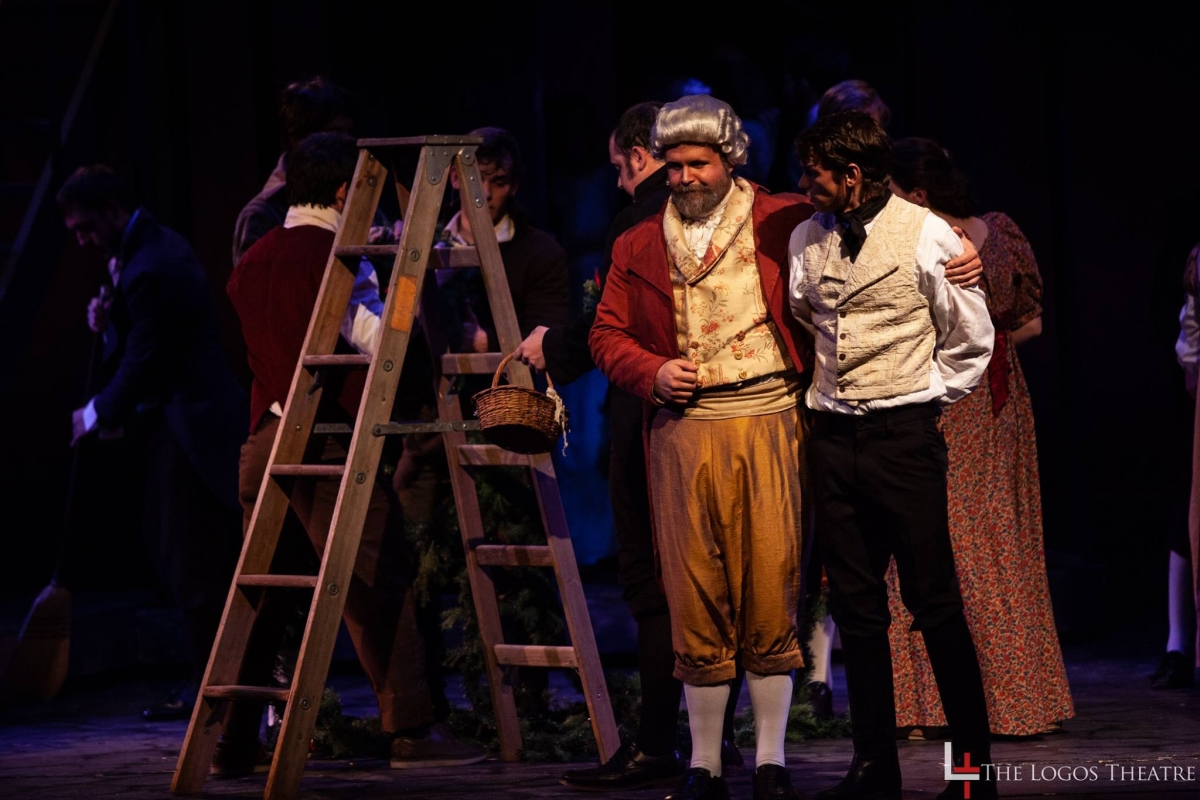 Repentance is not the mumbled and counterfeit “Sorry.” Rather, it is finally seeing the truth of who we are and what wrong we’ve done. It’s a decision to make things right and turn away from wrong. By the end of the story, Ebenezer is truly repentant. He is a changed person determined to share the love and grace that was freely given to him when he didn’t deserve it.
Repentance is not the mumbled and counterfeit “Sorry.” Rather, it is finally seeing the truth of who we are and what wrong we’ve done. It’s a decision to make things right and turn away from wrong. By the end of the story, Ebenezer is truly repentant. He is a changed person determined to share the love and grace that was freely given to him when he didn’t deserve it.
Again, what a wonderful testament to God’s love. What a lovely “Ebenezer.”
Jacob Marley is another symbolic name. Jacob Marley is the name of Scrooge’s old business partner, and it is he who intervenes to try and redeem his old friend before Ebenezer is sentenced to share Marley’s fate. The name “Jacob” actually means “thief and liar.” In the Bible, Jacob stole his brother’s blessing, then manipulated, lied, stole and connived until it came back to bite him (Jacob was later pardoned and given a new name, Israel.). What better name to give someone sentenced to roam as a specter for eternity carrying the weight of his ill deeds than a name that literally means thief and liar?
Many more Scriptural lessons are all through A Christmas Carol: love, forgiveness, redemption, self-sacrifice, joy, kindness, generosity, and on the list goes. Dickens beautifully illustrates the story of redemption that every Christian experiences in their own personal journey from a “squeezing, grasping, wrenching sinner” to a redeemed saint full of hope and joy.
There is not a more appropriate story to tell this Christmas season than a tale that brings hope, joy, and transformation from selfishness to love and generosity! Truly, Dickens captures the “reason for the season” and the Logos Theatre is thrilled and honored to put this on our stage.
HOW IS THIS DIFFERENT FROM OTHER CHRISTMAS CAROL PRODUCTIONS
This an original musical – all written in-house! All the music has been carefully and beautifully written and composed by our founder, Dr. Nicky Chavers and his oldest daughter, Christy Chavers Stutzman. Our Artistic Director, Nicole Chavers Stratton who is the third daughter of Dr. Chavers, has adapted our stage script directly from Dickens’ book and has held diligently to the original story. As this family team has worked together, brilliant musical pieces have been created that flow seamlessly with the timeless tale accentuating perfectly the miserliness of Scrooge, the happiness of Scrooge’s nephew, the character and faithfulness of Cratchit, and the euphoric joy of dear old Fezziwig. This musical blends the classic story with the brand new original music to give an incredible combination to the audience of nostalgia and new celebration.
SUMMARY
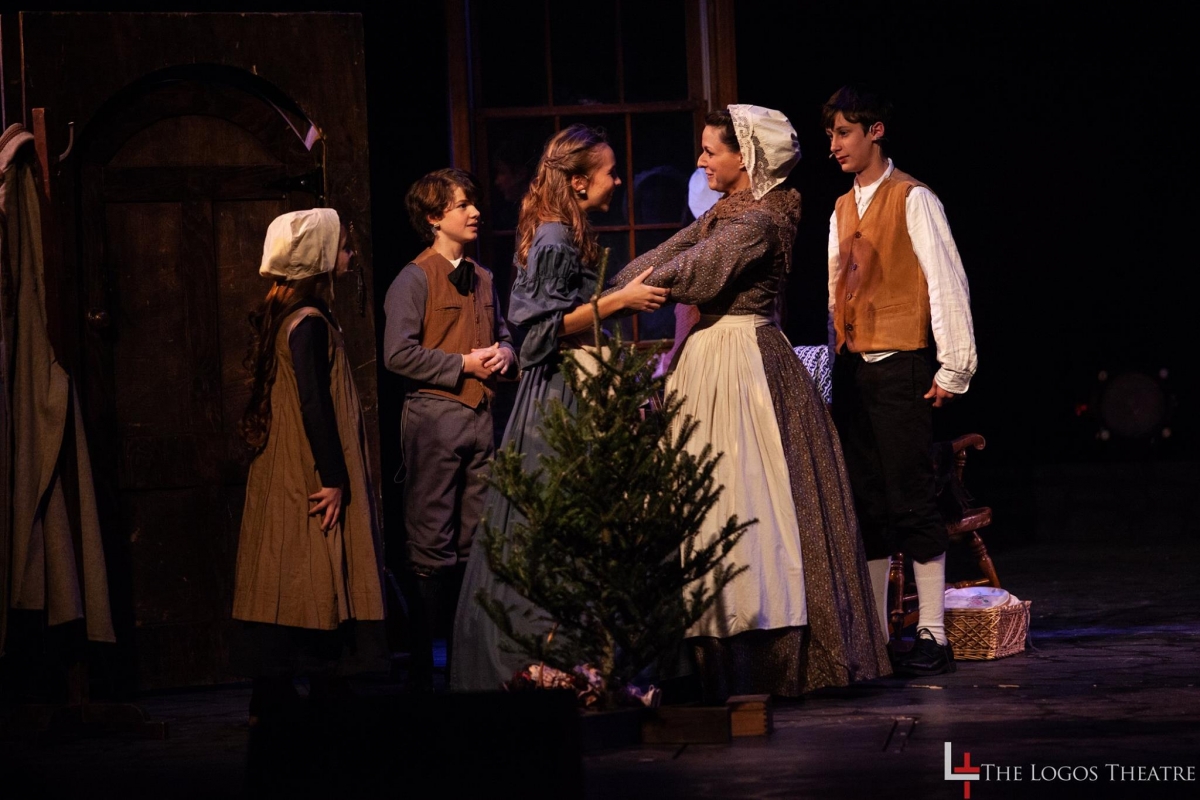
Charles Dickens’ A Christmas Carol tells the story of a mean-spirited, miserly old man named Ebenezer Scrooge who is so tight with his money that his poor clerk, Bob Cratchit, must shiver in the cold while he tries to complete his work in Scrooge’s counting house. Scrooge’s nephew, Fred, pays his uncle a visit and invites him to his annual Christmas party. As Fred joyfully shares his love for the season, two businessmen drop by and ask Scrooge for a contribution to their charity. Scrooge reacts to the holiday visitors with bitterness and venom, spitting out an angry “Bah! Humbug!” in response to his nephew’s “Merry Christmas!”
Later that evening, after returning to his dark, cold apartment, Scrooge receives a chilling visitation from the ghost of his dead partner, Jacob Marley. Marley, looking haggard and pallid, relates his unfortunate story. As punishment for his greedy and self-serving life his spirit has been condemned to wander the Earth weighted down with heavy chains. Marley hopes to save Scrooge from sharing the same fate. Marley informs Scrooge that three spirits will visit him during each of the next three nights. After the wraith disappears, Scrooge collapses into a deep sleep.
He wakes moments before the arrival of the Ghost of Christmas Past. The spirit escorts Scrooge on a journey into the past to previous Christmases from the curmudgeon’s earlier years. Invisible to those he watches, Scrooge revisits his childhood school days, his apprenticeship with a jolly merchant named Fezziwig, and his engagement to Belle, a woman who leaves Scrooge because his lust for money eclipses his ability to love another. Scrooge, deeply moved, sheds tears of
regret before the phantom returns him to his bed.
The Ghost of Christmas Present appears soon after and takes Scrooge through London to unveil Christmas as it will happen that year. Scrooge watches the large, bustling Cratchit family prepare a miniature feast in its meager home. He discovers Bob Cratchit’s crippled son, Tiny Tim, a courageous boy whose kindness and humility warms Scrooge’s heart. The specter then zips Scrooge to his nephew’s home to witness the Christmas party. Scrooge finds the jovial gathering delightful but realizes some of the merriment is at his expense. As the day passes, the spirit ages, becoming noticeably older. Toward the end of the day, he shows Scrooge two starved children, Ignorance and Want, living under his coat. He vanishes suddenly and finds himself in the presence of the ominous Ghost of Christmas Yet to Come.
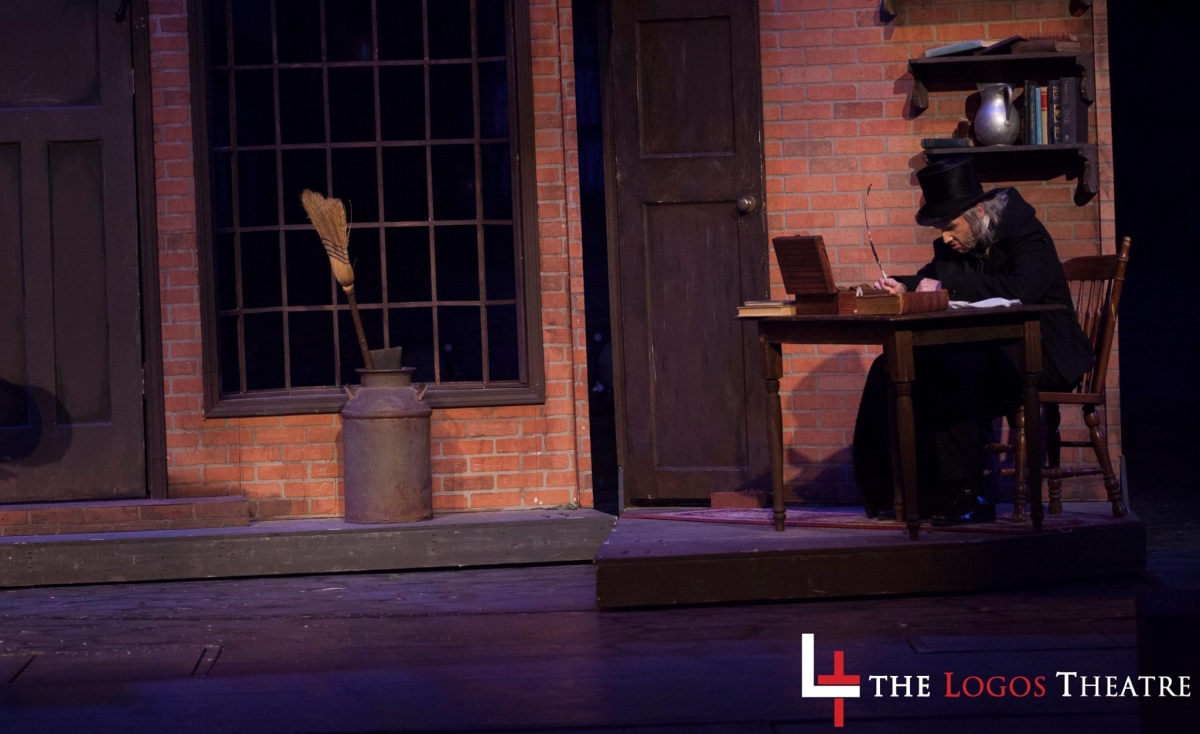 This third spirit leads Scrooge through a sequence of mysterious scenes relating to an unnamed man’s recent death. Scrooge sees businessmen discussing the dead man’s riches, some vagabonds trading his personal effects for cash, a poor couple expressing relief at the death of their unforgiving creditor, and the grief-stricken Cratchit home where Tiny Tim is now dead. Scrooge, anxious to learn the lesson of his latest visitor, begs to know the name of the dead man. After pleading with the ghost, Scrooge finds himself in a churchyard, the spirit pointing to a grave. Scrooge looks at the headstone and is shocked to read his own name. He desperately implores the spirit to alter his fate, promising to renounce his insensitive, avaricious ways and to honor Christmas with all his heart. Scrooge wakes from his sleep in a cold sweat to finds himself safely tucked in his bed.
This third spirit leads Scrooge through a sequence of mysterious scenes relating to an unnamed man’s recent death. Scrooge sees businessmen discussing the dead man’s riches, some vagabonds trading his personal effects for cash, a poor couple expressing relief at the death of their unforgiving creditor, and the grief-stricken Cratchit home where Tiny Tim is now dead. Scrooge, anxious to learn the lesson of his latest visitor, begs to know the name of the dead man. After pleading with the ghost, Scrooge finds himself in a churchyard, the spirit pointing to a grave. Scrooge looks at the headstone and is shocked to read his own name. He desperately implores the spirit to alter his fate, promising to renounce his insensitive, avaricious ways and to honor Christmas with all his heart. Scrooge wakes from his sleep in a cold sweat to finds himself safely tucked in his bed.
Overwhelmed with joy by the chance to redeem himself and grateful that he has been returned to Christmas Day, Scrooge rushes out onto the street hoping to share his newfound Christmas spirit. He sends a giant Christmas turkey to the Cratchit house and attends Fred’s party, to the stifled surprise of the other guests. As the years go by, he holds true to his promise and honors Christmas with all his heart: he treats Tiny Tim as if he were his own child, provides lavish gifts
for the poor, and treats his fellow human beings with kindness, generosity, and warmth.
A special thank you to SparkNotes for portions of this summary write up.
WHY DICKENS WROTE THIS BOOK
Charles Dickens’ classic Christmas tale was first written as a book back in 1843. Dickens personally had experienced poverty and hardship growing up in London as his father, and eventually his mother, were thrown into debtor’s prison and he was forced to go work long hours in a factory as a child.
It was in the writing of A Christmas Carol that Dickens pulled together the strands of much of his previous work – the concerns for the welfare of the poor and needy (and particularly their children), the plight of the working class, the alleged indifference of the upper class to those less fortunate, the importance of family and home. The book, however, also addressed the more open-ended question of what might happen should circumstances not change. Dickens, in letters to friends, expressed a fear that unless the needs of poor and desperate children were met, nineteenth-century civilization would be forever altered –and not for the better. It is telling that Dickens names two of his characters Want and Ignorance, warning to beware of both but especially Ignorance “for Ignorance is Doom, unless it be erased.” Equally instructive is the fact that these characters are children; essentially powerless to change their situation, dependent upon society for their care and well-being. Through Ebenezer Scrooge and his ghostly visitations, Dickens advances his concerns of what may happen to society in the absence of immediate changes–the poor getting poorer, the sick getting sicker, the lower classes trapped in a spiral of poverty, a widening gulf between those with much and those with little.




